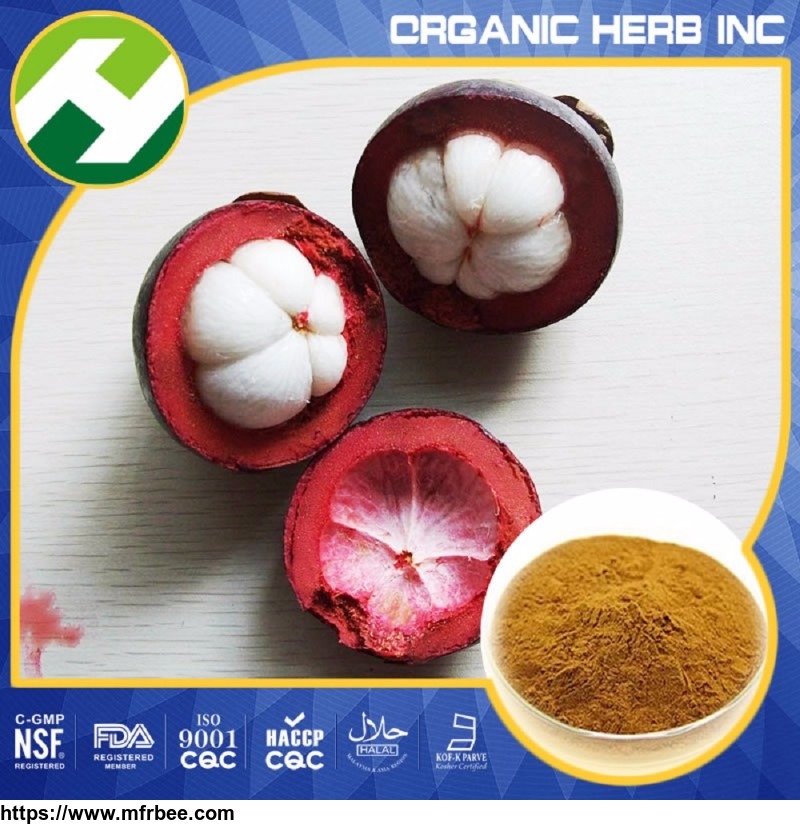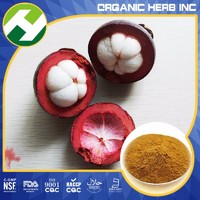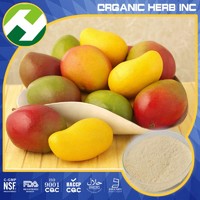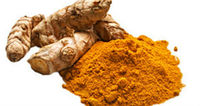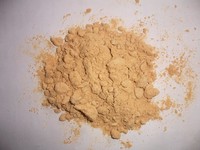The purple mangosteen (Garcinia mangostana) Extract
Product Quick Detail
- FOB Price
- USD $10.00 / Piece
- Minimum Order
- 1
- Place Of Origin
- China
- Packaging
- drum, folid bag
- Delivery
- 5Days
Specifications
What is
The purple mangosteen (Garcinia mangostana), colloquially known simply as mangosteen, is a tropical evergreen tree believed to have originated in the Sunda Islands and the Moluccas of Indonesia. It grows mainly in Southeast Asia, southwest India and other tropical areas such as Puerto Rico and Florida, where the tree has been introduced. The tree grows from 6 to 25 m (19.7 to 82.0 ft) tall. The fruit of the mangosteen is sweet and tangy, juicy, somewhat fibrous, with fluid-filled vesicles (like the flesh of citrus fruits), with an inedible, deep reddish-purple colored rind (exocarp) when ripe. In each fruit, the fragrant edible flesh that surrounds each seed is botanically endocarp, i.e., the inner layer of the ovary. Seeds are almond-shaped and sized.
The purple mangosteen belongs to the same genus as the other, less widely known, mangosteens, such as the button mangosteen (G. prainiana) or the charichuelo
Function
1. Antioxidant: Mangostin is the inhibitor of oxidation of LDL, which have major role in
cardio-vascular and related chronic diseases.
2. Anti-allergies and inflammations: 纬- mangostin was identified to inhibit COX, as their
inhibition acutely reduces inflammations, pains and fevers.
3. Antivirus and anti-bacteria: the polysaccharides in the extract form can stimulate phagocytic
cells to kill intracellular bacteria.
4. Anticancer: Mangostin has been revealed to inhibit topoisomerase, which is essential for cell
division in cancer cells, also could selectively induce cell apoptosis and inhibit cell division
Nutritional content
The endocarp is the white part of the fruit containing a mild flavor that makes the fruit popular for eating. When analyzed specifically for its content of essential nutrients, however, mangosteen nutrition is modest, as all nutrients analyzed are a low percentage of the Dietary Reference Intake (see right table for canned fruit in syrup, USDA Nutrient Database; note that nutrient values for fresh fruit are likely different, but have not been published by a reputable source).
- Country: China (Mainland)
- Business Type: Manufacturer
- Market: Americas,Europe
- Founded Year: 2004
- Address: A301, 1st building, 188# Huanbao Rd.,Changsha 410016, P.R. China
- Contact: Xirong Liu
